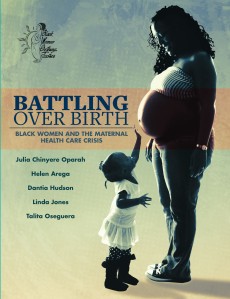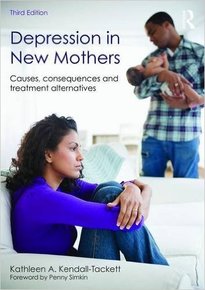Kimberley D. Thompson, PhD looks at how the quality of attachment in parent-child relationships affects a child’s security into adulthood, in an excerpt adapted from Perfect Mothers Get Depressed.
The quality of parent-child attachment relationships impacts a child’s development and the influence can pass from generation to generation. The quality of attachment relationships is a primary component of family life and influences the other aspects of parenting. This exploration may help you understand how a parent’s inner experience is transferred and transformed into the child’s experience.
Secure attachment

Healthy attachments tend to promote adaptation and resilience even in the face of hardship. When these healthy attachments are absent or spotty, this adaptation and resilience become harder to come by (e.g., Perry, Sigal, Boucher, & Paré, 2006). Experience with attachment figures becomes embedded in our psyche early in life in the form of internal working models, which are well developed systems of belief about ourselves in relationships with others (e.g., Johnson, Dweck, & Chen, 2007). Our underlying patterns of thought, feeling, and action flow from these internal working models, informing everything we do (e.g., Dimaggio et al., 2003).
Quality
The quality of the attachment relationship between baby and mother can be classified as either secure or insecure. As they grow and become more mobile, securely attached babies are emotionally free to explore their environment, discovering everything that babies are supposed to discover about the world. Secure babies check back with mother when they become distressed, but in general, they expect that the mother is present to keep them safe and will be there whenever she is needed. She is a comforting presence and a safe harbor as the baby explores the world. Fortunately, most babies appear to have secure attachment to at least one person (Bokhurst et al., 2003).
Watch attachment pioneer Mary Ainsworth’s research in the video clip.
Insecure attachment
Insecure babies don’t have the same level of confidence that they have a safe harbor. An insecure-avoidant baby is disturbed about separation, but does not check in with her mother appropriately and shuts down emotionally in times of stress. Mothers of insecure-avoidant babies tend to be uncomfortable with the child’s emotional neediness. These young children learn that the best way to keep the mother physically close is to suppress an indication of distress or need.
 Children with insecure-avoidant attachment styles tend to develop patterns that keep others at a distance. These children begin coping at an early age with their mother’s discomfort with closeness by keeping their natural needs for closeness turned off. Insecure-avoidant individuals continue to keep this system turned off by distraction, which manifests as inattention and hyperactive behavior in early childhood and as defiance and conduct problems later (Chen & Li, 2009; Sroufe, 2013). These behavior problems keep others at arm’s length, which is the level of closeness within these individuals’ comfort zone.
Children with insecure-avoidant attachment styles tend to develop patterns that keep others at a distance. These children begin coping at an early age with their mother’s discomfort with closeness by keeping their natural needs for closeness turned off. Insecure-avoidant individuals continue to keep this system turned off by distraction, which manifests as inattention and hyperactive behavior in early childhood and as defiance and conduct problems later (Chen & Li, 2009; Sroufe, 2013). These behavior problems keep others at arm’s length, which is the level of closeness within these individuals’ comfort zone.
Insecure-anxious babies, by contrast, are clingy and anxious about any separation. They spend a lot of time and effort seeking contact with the mother and not enough time exploring and learning. Mothers of insecure-anxious babies tend to be unpredictable and only sporadically responsive to the child’s needs. Sometimes such a mother is appropriately nurturing and sometimes not. The child learns to exaggerate signs of emotional neediness to get the mother’s attention. Anxiously attached children will later tend towards internalizing problems, such as anxiety and depression. This is because they are excessively preoccupied with monitoring and controlling the mother’s responses, which also requires a preoccupation with controlling and monitoring themselves. To control an attachment relationship requires you to stay one step ahead of the other person.
There are also some insecure babies that never develop reliable strategies to ensure their own safety. Known as insecure-disorganized, these babies become confused and chaotic when stressed. These children usually have a mother who is either abusive or who has unresolved wounds from being abused herself. She may have periods in which she dissociates, becomes enraged and violent, or otherwise behaves in an extremely frightening manner. Later in childhood, these insecure, disorganized babies may gravitate to either an anxious or an avoidant coping style, or may fluctuate depending on many factors (Lecompte & Moss, 2014).
Adult life
It is relatively easy to see how these attachment patterns can be carried into adult life, causing relationship difficulties. Strategies for navigating close relationships may change according to factors, such as age, gender roles, and the emergence of new attachment figures, but it appears that the underlying security or insecurity usually remains stable (Del Giudice, 2008).

If you have recognized some of your own experience in this post, you are likely becoming more aware of your habitual patterns of experiencing relationships. Find out more about how these patterns can manifest themselves in your adult relationships in my book, Perfect Mothers Get Depressed
References
Bokhorst, C. L., Bakermans-kranenburg, M. J., Pasco fearon, R. M., Van ijzendoorn Marinus H., Fonagy, P., & Schuengel, C. (2003). The importance of shared environment in mother-infant attachment security: A behavioral genetic study. Child Development, 74(6), 1769–1782.
Chen, B.-B., & Li, D. (2009). Avoidant strategy in insecure females. Behavioral and Brain Sciences, 32(01), 25–26.

Del Giudice, M. (2008). Sex-biased ratio of avoidant/ambivalent attachment in middle childhood. British Journal of Developmental Psychology, 26(3), 369–379.
Dimaggio, G., Salvatore, G., Azzara, C., Catania, D., Semerari, A., & Hermans, H. J. M. (2003). Dialogical relationships in impoverished narratives: From theory to clinical practice. Psychology and Psychotherapy: Theory, Research and Practice, 76(4), 385–409.
Johnson, S., Dweck, C., & Chen, F. (2007). Evidence for infants’ internal working models of attachment. Psychological Science, 18(6), 501–502.
 Lecompte, V., & Moss, E. (2014). Disorganized and controlling patterns of attachment, role reversal, and caregiving helplessness: Links to adolescents’ externalizing problems. American Journal of Orthopsychiatry, 84(5), 581–589.
Lecompte, V., & Moss, E. (2014). Disorganized and controlling patterns of attachment, role reversal, and caregiving helplessness: Links to adolescents’ externalizing problems. American Journal of Orthopsychiatry, 84(5), 581–589.
Perry, J. C., Sigal, J. J., Boucher, S., & Paré, N. (2006). Seven institutionalized children and their adaptation in late adulthood: The children of duplessis (les enfants de duplessis). Psychiatry, 69(4), 283–301.
Sroufe, L. A. (2013). The promise of developmental psychopathology: Past and present. Development and Psychopathology, 25(4pt2), 1215–1224.






















Leave a comment